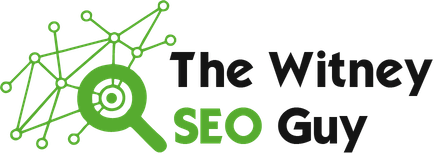There are over 200 different factors that determine where sites rank on Google Search, so where do you start when it comes to optimising your website? You’ll need to start by laying some foundations. These foundations start with changes you can make on your own website, also known as on-page SEO. The first chapter of on-page SEO begins with a good title.
Page Titles
The page title is the single most important on page SEO factor. It describes what your page is about, but doesn’t appear visually on the page itself. For instance, the page title on this page is “Where To Get Started With On-Page SEO”, which accurately describes what the article is about. The page title is tucked away in the HTML of your page, nested between <title> tags. Page titles appear in search engines as a link, as circled in red in the image below.

How to optimise your page titles for SEO
- Include the most important information at the start of the page title
- Include the word or words you want your page to rank for, but don’t overdo it
- Keep your page titles between 40 and 65 characters
- Ensure page titles are unique and not duplicated across the site
Meta Descriptions
The meta description is a short description that appears below a search result on Google. Meta descriptions don’t directly impact your search engine ranking. Instead, their purpose is to encourage people to click through to your website, so it’s worth writing a compelling meta description.

How to optimise your meta descriptions for SEO
- Use persuasive language that differentiates you from your competitors
- Include the words you want the page to rank for, these will be emboldened in your meta description
- Keep your meta descriptions between 150 and 160 characters
- Ensure your meta descriptions are unique and not duplicated across the site
Headings
The main heading tag, sometimes referred to as a H1, should accurately describe what a user would expect to see on a page, whilst encouraging them to read on. Heading tags follow a hierarchy, with the H1 being the highest in the hierarchy, H2 being the next highest, and so on.

How to optimise your headings for SEO
- Split your content into headings i.e. H1, H2, H3
- Keep them unique across the site
- Only use one H1, multiples lower headings are fine
- Keep your H1s between 20 and 70 characters
- Include the word you want the page to rank for, but only if it makes sense
Images
Google indexes images in Google Image Search. This gives you great exposure if your business operates in an image led industry, such as beauty or photography. Images can also help to illustrate content. For example, infographics and data visualisations help to present data in a way that can be easily understood. Featured images can create a feel for what the page content is about.
How to optimise your images for SEO
- Make your image file names meaningful
- Accurately describe your image using alt text
- Compress your images to keep file sizes below 100kb where possible

These on-page SEO factors should help you to get started with SEO, but if you need further help or consultancy then get in contact with an SEO consultant.

